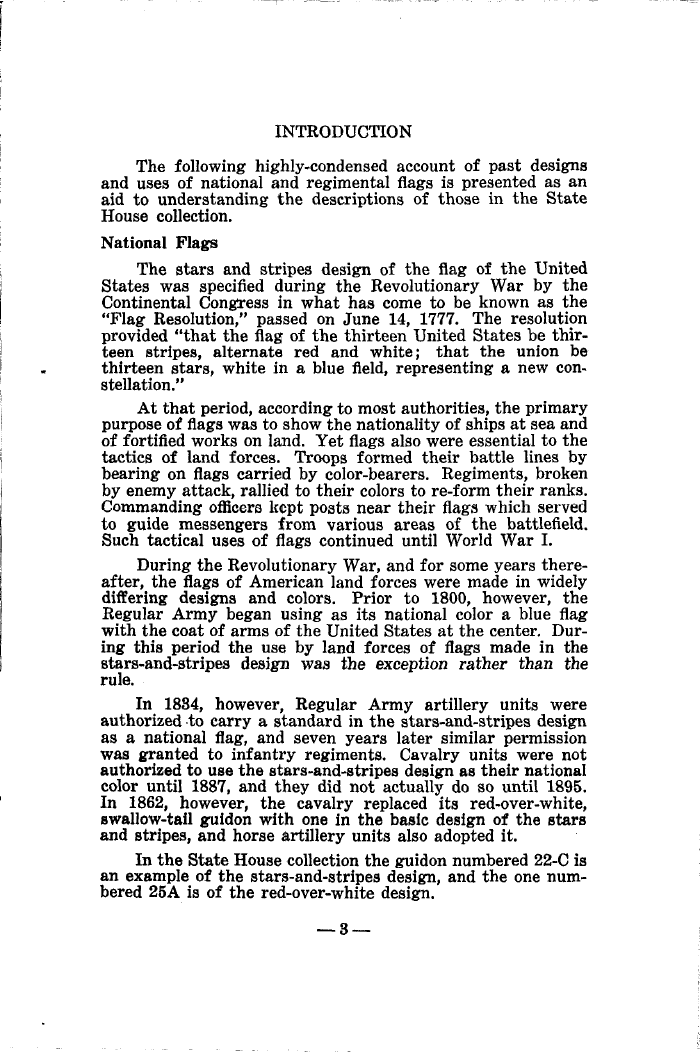 |
||||
 |
||||
| INTRODUCTION The following highly-condensed account of past designs and uses of national and regimental flags is presented as an aid to understanding the descriptions of those in the State House collection. National Flags The stars and stripes design of the flag of the United States was specified during the Revolutionary War by the Continental Congress in what has come to be known as the "Flag Resolution," passed on June 14, 1777. The resolution provided "that the flag of the thirteen United States be thirteen stripes, alternate red and white; that the union be thirteen stars, white in a blue field, representing a new constellation." At that period, according to most authorities, the primary purpose of flags was to show the nationality of ships at sea and of fortified works on land. Yet flags also were essential to the tactics of land forces. Troops formed their battle lines by bearing on flags carried by color-bearers. Regiments, broken by enemy attack, rallied to their colors to re-form their ranks. Commanding officers kept posts near their flags which served to guide messengers from various areas of the battlefield. Such tactical uses of flags continued until World War I. During the Revolutionary War, and for some years thereafter, the flags of American land forces were made in widely differing designs and colors. Prior to 1800, however, the Regular Army began using as its national color a blue flag with the coat of arms of the United States at the center. During this period the use by land forces of flags made in the stars-and-stripes design was the exception rather than the rule. In 1884, however, Regular Army artillery units were authorized to carry a standard in the stars-and-stripes design as a national flag, and seven years later similar permission was granted to infantry regiments. Cavalry units were not authorized to use the stars-and-stripes design as their national color until 1887, and they did not actually do so until 1895. In 1862, however, the cavalry replaced its red-over-white, swallow-tail guidon with one in the basic design of the stars and stripes, and horse artillery units also adopted it. In the State House collection the guidon numbered 22-C is an example of the stars-and-stripes design, and the one numbered 25A is of the red-over-white design. — 3 — |